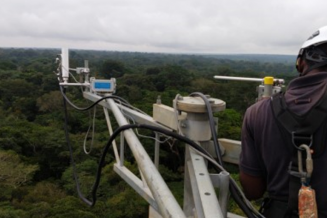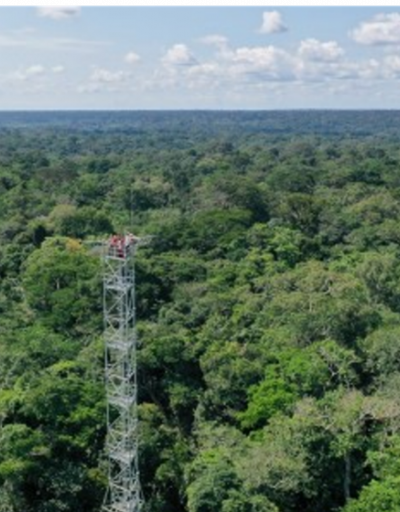Hosted by Jean-Pierre Ilboudo, head of the UNESCO office in Kinshasa, this inception meeting followed the signing of an agreement by UNESCO and the Government of Belgium in December. The Government of Belgium is contributing almost €1.7 million to the project, whereas UNESCO is co-ordinating the project implementation with its partners.
A first for Africa
The project is a first for Africa but not the first time that this community from the Congo Basin has been a pioneer. In 1976, they were among the first in the world to espouse the idea – revolutionary at the time – that the best way to protect the natural world was not to make it off-limits to people but, rather, to encourage communities to live in harmony with nature. This led the community to apply for membership of UNESCO’s nascent World Network of Biosphere Reserves. Today, this network counts 727 members in 131 countries. These biosphere reserves are home to 275 million people and span 5% of the surface of the Earth.
Forty-five years after joining the network, Yangambi Biosphere Reserve is once again a pioneer. This time, it has embraced the idea of becoming a knowledge hub and observation site for climate change and biodiversity. It is also serving as a demonstration site for efforts to promote sustainable development in the Congo Basin, such as through ‘green’ industries such as fish farming and sustainable community forestry.
A tower to monitor the planet’s second-largest carbon sink
One of the project’s key partners is the University of Ghent in Belgium. In March 2020, the university installed the Congoflux Tower in the Yangambi Biosphere Reserve, the first of its kind in the Congo Basin.
A flux tower measures the exchange of greenhouse gases between the atmosphere and an ecosystem. Some 55 m tall, the Congoflux Tower rises 15 m above the forest canopy as it collects data over a 1 km2 radius on exchanges of water vapour and greenhouse gases such as carbon dioxide, nitrous oxide and methane between the atmosphere and the forest.
These data will fill yawning gaps in our knowledge of the role that the forest plays in carbon sequestration and, thereby, in limiting climate change.

An emphasis on research and training
The second partner in the project is the Centre for Biodiversity Surveillance (Centre de surveillance de la biodiversité, CBS), situated in the nearby city of Kisangani. It will monitor biodiversity on the ground using camera traps and drones, as well as through the collection of environmental DNA samples (eDNA). These samples of DNA are released by an organism into its environment; they are typically collected in the form of water, soil, sediments or surface swabs.
The CBS’ monitoring work will be done in cooperation with the Royal Belgian Institute of Natural Sciences’ programme to develop Capacities for Biodiversity and Sustainable Development (CEBioS). The CBS and CEBioS will also train staff in the biosphere reserve in remote sensing, taxonomy and other fields.
The project’s third partner is the Regional Postgraduate School for the Integrated Management of Tropical Forests and Lands (Ecole régionale postuniversitaire d'aménagement et de gestion intégrés des forêts et territoires tropicaux, ERAIFT). It is contributing socio-economic and socio-anthropological studies to the project.
ERAIFT is based in Kinshasa but has an antenna in Yangambi Biosphere Reserve. ERAIFT was established 30 years ago with UNESCO support[1]. It trains African specialists and decision-makers how to apply the ecosystem approach to African forest management.
ERAIFT was one of three partners which helped the University of Ghent to install the Congoflux Tower in Yangambi Biosphere Reserve. The others were the Indonesian Center for International Forestry Research and the National Institute for Studies and Research in Agronomy (Institut national des études et recherches agronomiques, INERA) in Bukavu, in the Democratic Republic of Congo.
Combined with the data collected by the Congoflux Tower, data collected from monitoring biodiversity will enrich the Democratic Republic of Congo’s contribution to national and international reports monitoring implementation of the United Nations Framework Convention on Climate Change by reinforcing the country’s capacity to contribute information and data that are measurable, reportable and verifiable.
At the local level, INERA and the national Man and Biosphere Committee, which manage the biosphere reserve jointly, will be institutional and implementing partners for the project.
[1] See : Africanizing Tropical Forest Management in A World of Science, 2003


